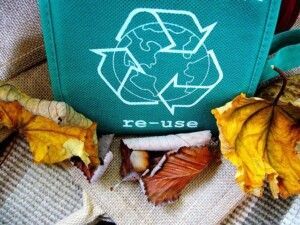How To Make Sustainability Part Of Your Brand Image

Your brand image needs to be modern. And to be modern, you need to have sustainability in mind at all times. After all, we need to live in a greener world than ever, and a lot of business activity can impact heavily on that. So what can you do here? How can you ensure your brand comes off as green as you are
behind closed doors
?
It’s all in the branding and communications. Of course, you need to back up your marketing efforts, but you should always focus on that green angle whenever you are running marketing and communications campaigns. So here’s how to tie the two together and make sure they go hand in hand.
Work with Similarly Minded Suppliers
If you’re working with sustainability focused suppliers, you can be a part of each other’s brand image. That means you can offer an opportunity to represent modern businesses for your community, and that can bring a lot more profit both ways. Local customers are always the most loyal of your entire customer base, and working with a sustainable supply chain will go a long way. Engage your supply base in your sustainability programs and be open to changing the contract if need be; you need to always work with people willing to reach the heights of sustainability.
Make More Than One Green Effort
If you want to incorporate sustainability into your business, you need to be transparent and provide measurable results. Communicating your efforts and progress through on your company blog and through advertising is an area where you can start to attract the right attention. So make sure you’re fulfilling on your commitments, whether that is securing renewable energy agreements, designing your packaging with recyclable components, or even utilizing reusable items in the breakroom and providing that your secure document shredding is located in a notable recycling center.
Value Transparency in Your Marketing
Transparency, or honesty, is the best practice when it comes to marketing. The shopping generation is getting a lot better at noticing spin when it comes to company statements, so it’s best to be straightforward and clear in all your messaging. You don’t have to invite people into your operational center, but you do need to showcase your sustainability efforts. Highlighting these elements of your company benefits all stakeholders and communication is needed related to your sustainability journey.
An effective way to demonstrate the sincerity of your values to your audience is to not only tell them about your values but to directly show them. If you’re implementing green production processes on your manufacturing lines, for instance, then with industrial video production, you can get into the details of how you are living up to your sustainable image. Video is not only a good way to perform a demonstration, but it creates a more emotionally driven link with your audience as well, helping them better connect with the brand.
Bring Sustainability to your Employees
Your employees need to be encouraged on the company’s sustainability journey as well. Encourage employees with ideas, programs, and action steps to tie their positions to the overall sustainability plan. More so, employees can talk about you on social media in this light.
Business sustainability is a valued driver of business and it’s a great marketing tool too when executed well with relevant and meaningful communications to interested stakeholders.


